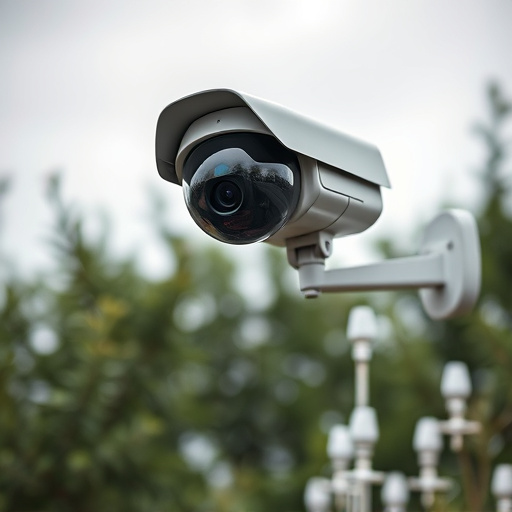Mount dummy cameras at strategic locations like front doors, garage doors, windows, and visible outdoor areas to deter burglars. Place them at eye level or slightly elevated for clear lines of sight, ensure good illumination, and use advanced features for maximum authenticity. Balance security needs with legal considerations, avoiding private spaces and adhering to zoning regulations when mounting cameras for break-in prevention.
Realistic dummy cameras are an increasingly popular deterrent against break-ins, offering a subtle yet effective solution for home and business security. This comprehensive guide explores how these innovative devices work as visual reminders, deterring potential intruders through strategic placement. From understanding the technology to selecting optimal mounting locations and enhancing their realism, we provide essential insights. Additionally, we discuss legal considerations and ethical guidelines for responsible installation, ensuring a safe and effective approach to protecting your property.
- Understanding Dummy Cameras: A Discreet Deterrent
- Choosing Mounting Locations for Optimal Visibility
- Strategies to Enhance Realistic Appearance and Effectiveness
- Legal Considerations and Ethical Placement Guidelines
Understanding Dummy Cameras: A Discreet Deterrent
Dummy cameras, also known as decoy or fake security cameras, are an innovative and subtle way to deter potential burglars. These devices mimic real surveillance equipment, providing a powerful psychological advantage for homeowners and businesses alike. By strategically placing dummy cameras, you create the illusion of enhanced security, even without actual monitoring.
When considering where to mount these cameras, think about high-risk areas like entry points, such as front doors, garage doors, or windows. Also, visible locations in your yard or outside lighting fixtures can serve as effective deterrents. The key is to make it look like you have an extensive security system in place, which alone can significantly reduce the likelihood of a break-in attempt.
Choosing Mounting Locations for Optimal Visibility
When considering where to mount dummy cameras, strategic placement is key for optimal visibility and deterrence. Choose locations that offer clear lines of sight across your property, such as entryways, windows, and common access points. Positioning them at eye level or slightly elevated ensures a comprehensive view, making potential intruders more visible and less likely to attempt a break-in. Additionally, consider mounting them in areas with good illumination to enhance their effectiveness both as visual deterrents and for any subsequent evidence.
Strategies to Enhance Realistic Appearance and Effectiveness
To maximize the realism and effectiveness of dummy cameras in preventing break-ins, consider strategic placement and design details. First, where you mount these devices matters significantly. Position them in areas that offer clear lines of sight into various entry points, such as windows, doors, and potential access points. In residential settings, place them on exterior walls or near windows with visible interior spaces. For businesses, strategically locate dummy cameras at entrances, parking lots, and other high-risk zones.
Additionally, enhance their visual authenticity by incorporating advanced features. Look for models with moving parts like spinning lenses or swaying heads to mimic real camera activity. Some even feature flashing lights or audio alerts that activate upon detection, further deterring potential intruders. Realistic detailing, such as weatherproofing and diverse designs to match surroundings, ensures the dummy cameras blend seamlessly into their environment, making them more effective in discouraging crime.
Legal Considerations and Ethical Placement Guidelines
When considering where to mount dummy cameras for preventative measure against break-ins, it’s crucial to balance security needs with legal considerations and ethical placement guidelines. While dummy cameras serve as a deterrent, their strategic placement must respect privacy rights. Local laws regarding surveillance, including requirements for visible signage, consent for recording, and data storage practices, should be thoroughly understood before installing any camera system. Ethical guidelines suggest avoiding placing cameras in areas where there is reasonable expectation of privacy, such as bathrooms or bedrooms. Additionally, ensuring clear visibility and coverage of entry points while adhering to zoning regulations and not obstructing public ways is essential for effective use of dummy cameras as a break-in prevention tool.
Realistic dummy cameras have proven to be an effective deterrent against break-ins, offering a discreet yet powerful security solution. By strategically mounting these devices in visible areas, homeowners and businesses can enhance their overall safety while adhering to legal guidelines and ethical placement practices. When selecting where to mount dummy cameras, consider high-risk entry points and opt for locations that provide optimal visibility, ensuring maximum impact on would-be intruders.
